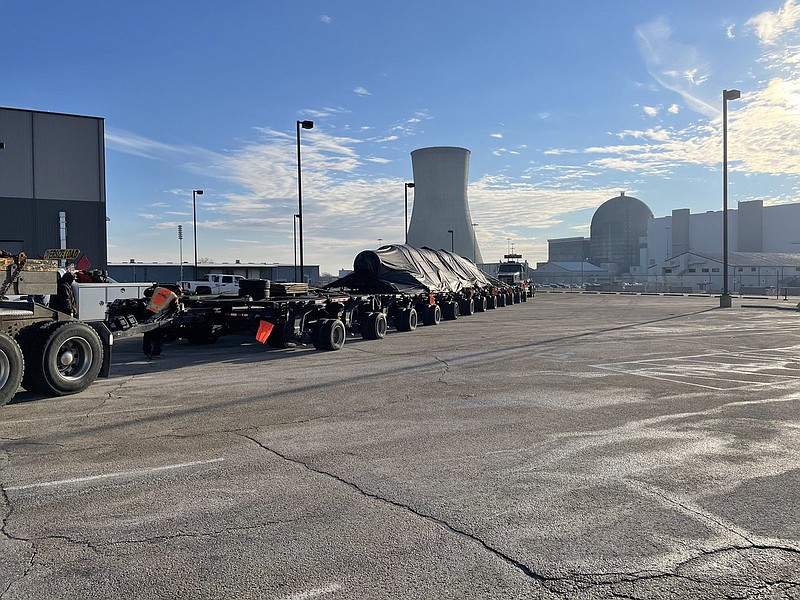Two months after a generator issue caused an unplanned shutdown at Callaway Energy Center, the plant is still not operating.
Related to the shutdown is the caravan of vehicles that crept east Monday on Missouri 94, complete with flashing lights, flags and "oversize load" written in bold block letters.
The large, tarp-covered load was characterized by Ameren Missouri Site Vice President Barry Cox as a "significant component."
"We decided that significant components did need to be replaced," Cox wrote in an email. "Those are long lead-time materials that need to be manufactured, installed and tested so that we can ultimately bring Callaway back safely and sustainably."
The plant experienced three unplanned shutdowns - also known as "scrams" - during the last three quarters of 2020. Those scrams, in addition to lower than normal hours of critical operation at the plant over the year, will result in additional oversight from the U.S. Nuclear Regulatory Commission.
The NRC determines oversight based on a variety of performance indicators, sorting each plant in the country into five different columns on an "Action Matrix." Most plants are currently in column one of the Action Matrix chart, indicating baseline inspections.
According to a Feb. 10 letter from the NRC to Ameren Missouri, the Callaway reactor has been moved to column two, which warrants a supplemental inspection. Only three other reactors in the United States are currently in column two.
None of the country's reactors are in columns three, four or five, which indicate degraded or unacceptable performance.
According to a Feb. 18 event report from Ameren Missouri to the NRC, the current shutdown at the Callaway Energy Center is the result of a generator fault.
On Dec. 24, shortly after a planned maintenance shutdown, the plant's turbine and reactor tripped due to a failure of the connection rings on the main generator stator. Safety systems functioned as designed, and "there were no actual nuclear, radiological or personnel safety impacts associated with this event," according to the report.
"We are taking the appropriate corrective actions to return to column one," Cox wrote.
Ameren Missouri provides power for 1.2 million electric and 130,000 natural gas customers in central and eastern Missouri, relying on coal-fired, natural gas and oil-fired, hydroelectric and renewable energy facilities.
In January, the company indicated the shutdown at Callaway Energy Center would not pose any challenges meeting customer needs or result in significant financial impacts. Cox said that is still the case.
Edwin Lyman, director of nuclear power safety at the Union of Concerned Scientists, characterized the scrams and lengthy shutdown at the Callaway plant as uncommon.
"To have a major piece of equipment fail like that is fairly unusual," Lyman said.
According to the Feb. 18 event report, addressing the equipment failure will involve "restoration of the main generator to its original design, including replacement of the connection rings," as well as refurbishment of generator support systems.
To Lyman, this indicates the equipment failures might be related to modifications to the generator.
"There are not enough details to understand fully - it does sound like there were some modifications to the generator that were causing this problem," Lyman said.
As someone who keeps an eye on nuclear power, Lyman said his main questions about the status of the Callaway plant relates to whether this shutdown was foreseeable or preventable.
"If they made changes to the design, were they fully approved and analyzed in a rigorous way?" Lyman said. "Did they miss something or is this something they could have predicted?"

